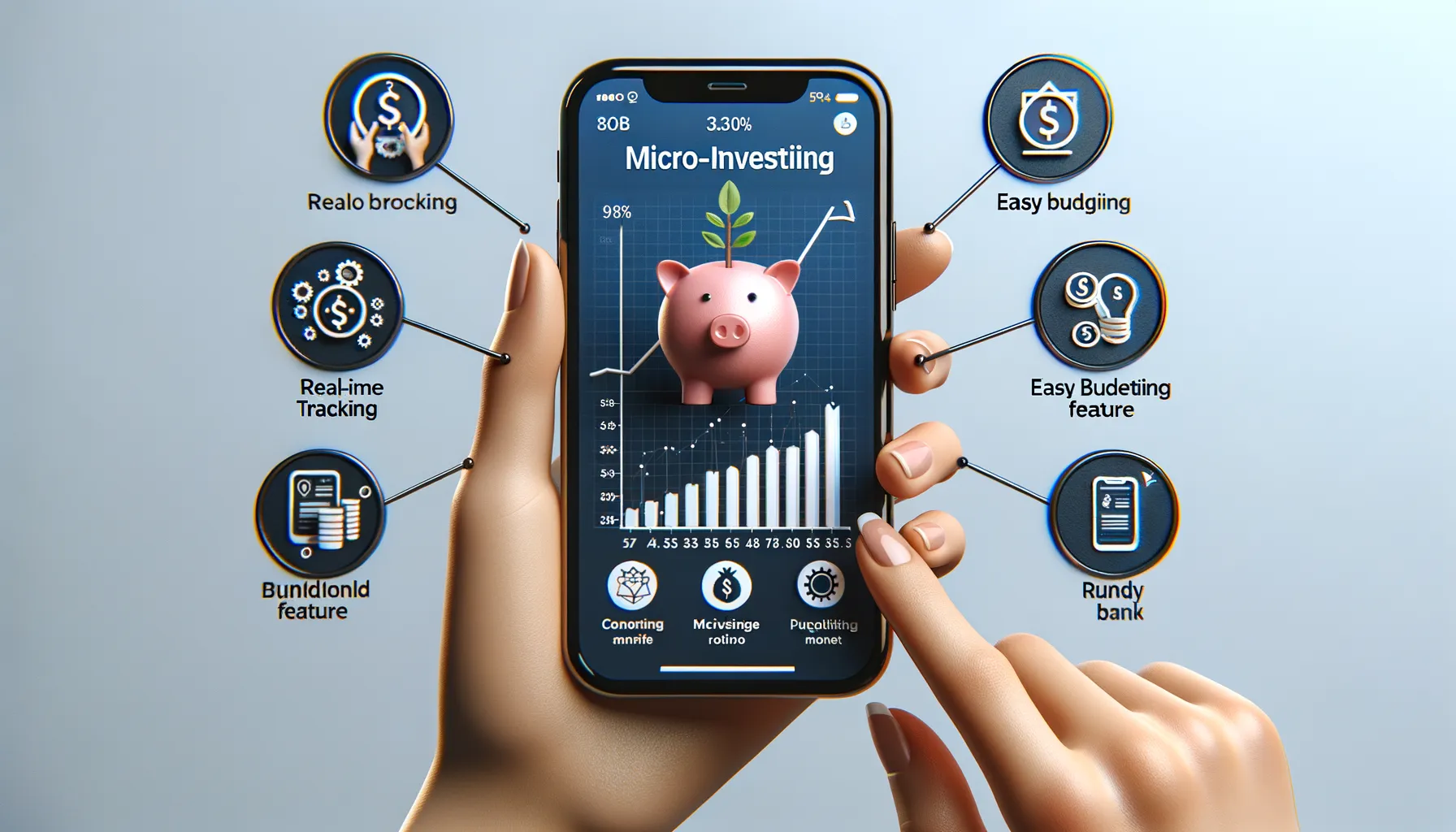The Rise of Micro-Investing Apps: Are They Worth It?
Understanding Micro-Investing Apps
What Are Micro-Investing Apps, Really?
Imagine this: you’re sipping coffee at your favorite cafe, scrolling through your phone, and—bam!—you invest $5 into the stock market without even breaking a sweat. That’s the magic of micro-investing apps. These aren’t the intimidating platforms reserved for Wall Street gurus in expensive suits. Nope. They’re your everyday money sidekick, designed to make investing easy, approachable, and dare I say, *fun*.
With micro-investing, it’s not about tossing in thousands of dollars at a time. Instead, you invest in bite-sized chunks—think spare change from your morning latte or an extra $10 from your paycheck. Some apps, like Acorns, even automate this process by rounding up your purchases and investing the difference. Fancy, right?
Why Should You Care About This Trend?
These apps are built for modern life—and let’s face it, modern attention spans. You can dive into the market with just pocket change, no finance degree required. Consider their key appeals:
- Accessibility: Start with as little as $1—less than the cost of your favorite streaming subscription.
- User-friendly design: Forget complicated graphs; these apps keep things sleek and simple.
- Automation: Investments grow quietly in the background, like a money tree you don’t have to water.
So, whether you’re saving for your first car or retirement (or both!), micro-investing apps could be the nudge you didn’t know you needed.
Key Features and Benefits of Micro-Investing Apps

What Sets Micro-Investing Apps Apart?
Micro-investing apps have completely revolutionized how we think about growing wealth. These aren’t your average, high-barrier investment platforms; they’re like having a financial coach in your pocket. With just a few bucks—yes, even the loose change from your last coffee run—you can start investing. Sounds pretty low-pressure, right?
One standout feature is their ability to make investing ridiculously accessible. Forget complicated charts or intimidating jargon. You don’t need to be a Wall Street pro to get started. Many apps allow you to invest as little as $1 (or even less!), making them ideal for beginners or anyone intimidated by traditional financial systems.
And let’s talk automation! Imagine setting up your “spare change” to automatically grow into investments through round-ups. Spent $4.25 on groceries? These apps round that up to $5 and invest the difference. You’ll hardly notice it, but over time, those micro amounts snowball into something meaningful.
- Fractional shares: Own pieces of big-name companies without shelling out hundreds per stock.
- Educational tools: Many apps offer bite-sized lessons so investors learn as they go.
- No lock-in periods: Withdraw anytime, unlike traditional investment accounts.
Perks That Keep You Coming Back
Beyond accessibility, these apps often feel personal. Ever tried apps like Acorns or Robinhood? They’re designed to make you feel at ease with vibrant dashboards, milestone trackers, and even nudges to stick to your goals. Investing with them feels less intimidating and more like a conversation over coffee than a lecture in economics.
Plus, there’s the thrill of monitoring your progress! Watching your changed pennies evolve into dollars—and eventually more—motivates in a way that simply saving money cannot. For many, micro-investing isn’t just about finances; it’s about stepping into the world of possibilities, one small step at a time.
Potential Drawbacks and Risks Involved

The Fine Print You Can’t Afford to Ignore
Let’s talk about what many micro-investing app ads conveniently skim over. While they promise the world – transforming pocket change into financial freedom – there are cracks beneath the glossy surface that deserve your attention.
For starters, fees can quietly add up and chip away at your hard-earned returns. Sure, many apps charge just a few dollars a month, but if you’re only investing small amounts, those fees could end up eating a hefty percentage of your balance. For instance, paying $3 monthly on an account with $300 means saying goodbye to 12% of your portfolio annually! Yikes.
Another thing? These apps thrive on simplicity, but that can sometimes translate to limited investment options. Think pre-designed portfolios and cookie-cutter strategies instead of the personalized approaches you’d get elsewhere.
They Might Be Too Easy to Use
Yes, there’s such a thing as “too easy.” Micro-investing apps gamify investing, making each deposit feel like unlocking a new level. But this convenience can nudge you into unhealthy habits.
Consider these cautionary points:
- You could find yourself checking your investments obsessively, confusing short-term market fluctuations with disaster or success.
- If you’re not paying attention, it’s easy to lose sight of your long-term goals amidst the app’s dopamine-inducing interface.
Lastly, while apps make investing accessible, they don’t always offer robust education. That quick sign-up process doesn’t help you grasp essential concepts like risk tolerance or the impact of market downturns. What you gain in convenience, you might lose in confidence during turbulent times.
How to Choose the Right Micro-Investing App for You

Unlocking Your Perfect Match: Tailoring the App to Your Goals
Choosing the right micro-investing app is like picking a travel buddy—each one is built for a different kind of journey. Are you saving for a dream vacation, building an emergency fund, or dipping your toes into the world of stock investing? Start by zooming in on your goals. Some apps, like Acorns, round up your purchases and sneak spare change into investments. Others, like Stash, offer curated portfolios designed to help you learn while you grow your wealth.
Ask yourself: do you crave simplicity, or are you ready to get hands-on? If the idea of automatic deposits and set-it-and-forget-it appeals to you, go for an app built for passive investors. But if you’d rather channel your inner Wall Street wizard, look for platforms with customization options and robust research tools.
- Fees: Even tiny fees can nibble away at your returns—always check how much it costs to use the app monthly or per transaction.
- User Experience: Is the app intuitive, with clean designs and clear instructions? A cluttered interface can be a dealbreaker.
- Features: Do they support fractional shares, offer guidance, or provide educational content?
Dive Deeper Into Security and Community
Never trade trust for flash. Look for apps that have strong regulatory backing, like insurance for your funds (think SIPC protection). Security features such as two-factor authentication are non-negotiable. After all, this is your hard-earned money on the line.
On a more personal level, consider whether the app motivates and empowers you. Check out reviews and community forums. Who else is using it? Some apps, such as Public, create a social experience where you can follow other investors’ moves. Others keep it private and low-key. Find a vibe that matches your investing personality—it’s like finding a gym that makes you want to show up.
Future Trends and the Impact of Micro-Investing Apps

How Technology is Shaping Tomorrow’s Investors
Imagine a world where investing feels as natural as scrolling through your favorite social app. Well, we’re closer to that future than you think, thanks to the ever-evolving ecosystem of micro-investing apps. These platforms aren’t just tools; they’re catalysts for change, empowering everyday people—yes, even those who swear they “don’t know the first thing about stocks”—to get their slice of the financial pie.
What’s fascinating is how these apps are tapping into cutting-edge technologies like AI-driven investment insights. Think of it as having a pocket-sized financial advisor. Machine learning algorithms predict trends, suggest asset allocations, and even guide users toward customized portfolios—all while you sip your morning coffee.
The Social Revolution in Micro-Investing
Gone are the days when investing was a solitary endeavor. Newer apps are weaving social elements into the fabric of finance, transforming it into a community-driven experience.
- Follow seasoned investors and peek into their portfolios.
- Join investment groups to exchange tips or debate market trends.
- Compete in friendly “fantasy stock” challenges to sharpen your skills.
This shift doesn’t just make micro-investing more engaging; it fosters accountability. After all, you’re more likely to put down roots in your financial journey when you’ve got peers cheering you on. Who would’ve thought investing could feel…almost social?
